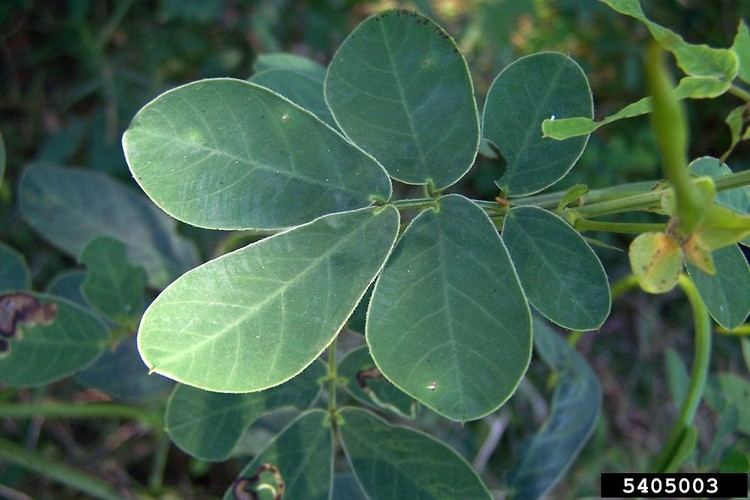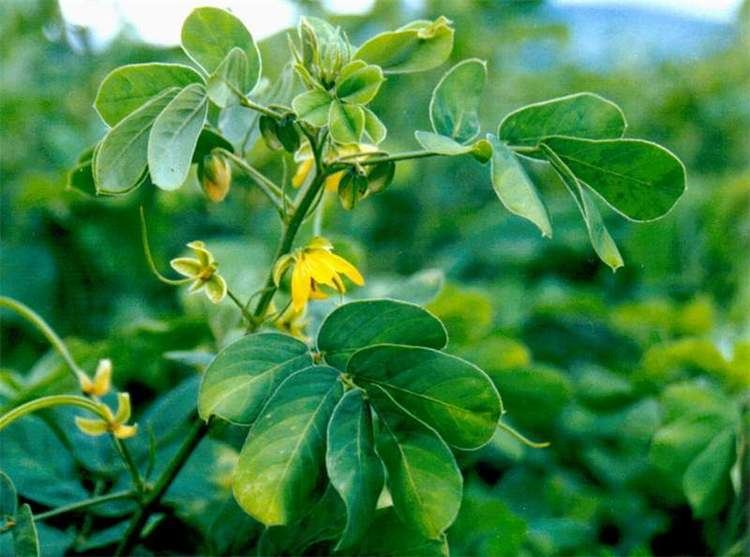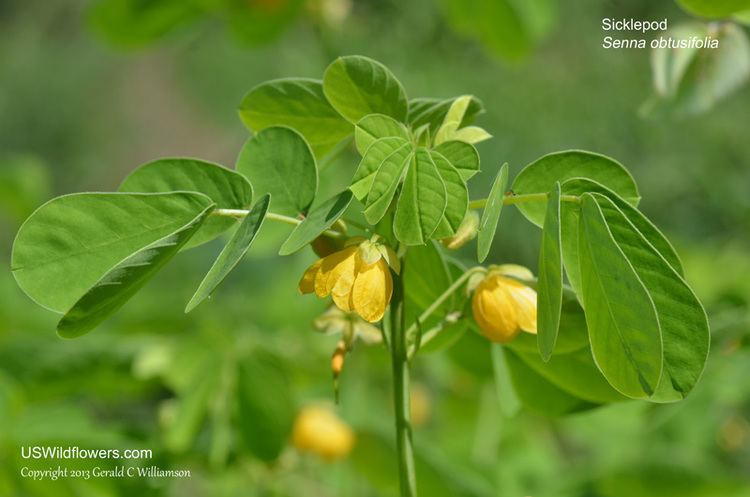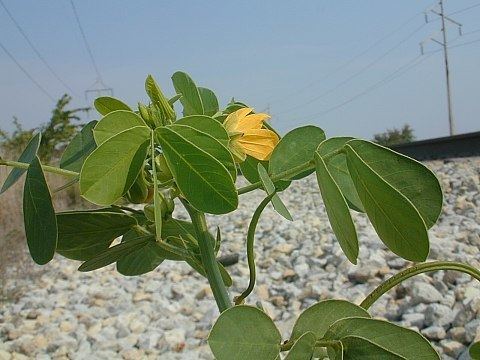Tribe Cassieae Rank Species | Subtribe Cassiinae | |
 | ||
Similar Chrysanthemum tea, Jiaogulan, Goji, Chenpi, Flowering tea | ||
Senna obtusifolia (Chinese senna, American sicklepod or sicklepod) is a legume in the genus Senna, sometimes separated in the monotypic genus Diallobus. It grows wild in North, Central, and South America, Asia, Africa, and Oceania, and is considered a particularly serious weed in many places. It has a long-standing history of confusion with Senna tora and that taxon in many sources actually refers to the present species.
Contents

The green leaves of the plant are fermented to produce a high-protein food product called "kawal" which is eaten by many people in Sudan as a meat substitute. Its leaves, seeds, and root are also used in folk medicine, primarily in Asia. It is believed to possess a laxative effect, as well as to be beneficial for the eyes. As a folk remedy, the seeds are often roasted, then boiled in water to produce a tea. The plant's seeds are a commercial source of cassia gum, a food additive usually used as a thickener and named for the Chinese Senna's former placement in the genus Cassia. Roasted and ground, the seeds have also been used as a substitute for coffee. In traditional Korean medicine, they are called gyeolmyeongja (결명자) and usually prepared as tea. They are also used in Kampō (traditional Chinese medicine in Japan), where they are called ketsumei-shi (ケツメイシ, 決明子) or by their Chinese name jué míng zǐ (traditional: 決明子, simplified: 决明子).

In autumn rain, the grasses rot and die, / Below the steps, the Chinese Senna's colour is fresh.
Full green leaves cover the stems like feathers, / And countless flowers bloom like golden coins.
The cold wind, moaning, blows against you fiercely, / I fear that soon you'll find it hard to stand.

Names, taxonomy and identifier

Apart from "sicklepod" and "Chinese senna", S. obtusifolia has a wide range of common names. It is also known in English as Foetid Sassia (or "cassia"), Sickle Senna, Coffeeweed or Arsenic Weed, and somewhat ambiguously as "blunt-leaved senna", "coffee pod" or "java bean". The scientific name means "blunt-leaved senna", with obtusifolia coming from Latin obtusus ("dull", "blunt") + folium ("leaf").
Names in its native range are also:

Synonyms
Chinese Senna has been treated under a wide range of scientific names. Some are synonyms of Senna obtusifolia, others are names that have been applied to it in error. In addition, several of these names may also refer to related plants. In particular, the distinction between this species and Senna tora was fraught with errors and misunderstandings:
Meat substitute
Kawal, a protein-rich meat substitute eaten in Sudan, is produced by crushing the leaves of the plant into a paste which is then traditionally fermented in an earthenware jar, buried in a cool place. The jar is dug up every three days and the contents mixed. After two weeks, the paste is removed and rolled into balls which are left to dry in the sun. They are usually cooked in stews with onions and okra.
In literature
This plant is a conspicuous member of the flora of its native home. It evoked powerful images to the celebrated Tang Dynasty poet Du Fu (杜甫), who in one of his "Sighs of Autumn Rain" poems (Qiū yǔ tàn, 秋雨叹) discussed it thus:
In autumn rain, the grasses rot and die, / Below the steps, the Chinese Senna's colour is fresh.
Full green leaves cover the stems like feathers, / And countless flowers bloom like golden coins.
The cold wind, moaning, blows against you fiercely, / I fear that soon you'll find it hard to stand.
